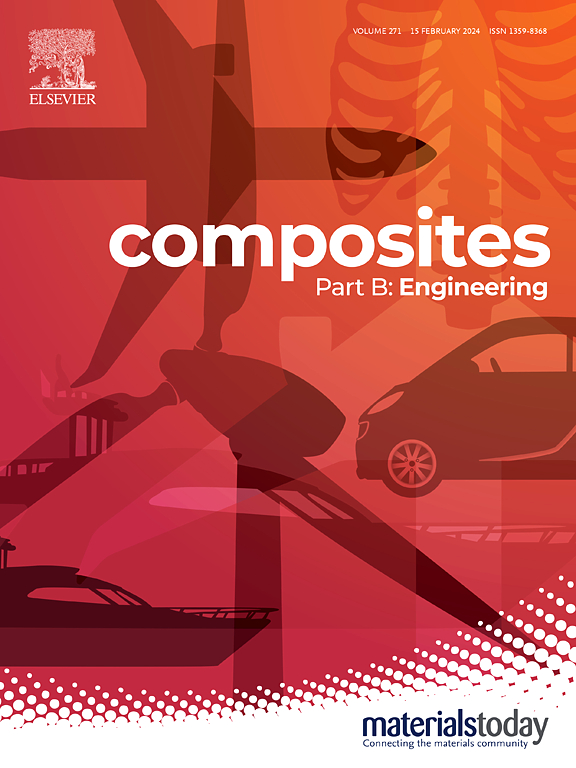Investigating interfacial properties vs interphase thickness in a thermoplastic composite
IF 12.7
1区 材料科学
Q1 ENGINEERING, MULTIDISCIPLINARY
引用次数: 0
Abstract
Thermoplastic composites offer exceptional characteristics—particularly weldability, superior toughness, and potential for rapid out-of-autoclave processing—that make them highly attractive for diverse applications. The temperature history during their manufacturing plays a critical role in shaping key microstructural features, including fiber–matrix interfacial properties, matrix crystallinity, and interphase morphology. These characteristics, in turn, determine the composite's macroscale mechanical performance. In carbon fiber-reinforced low-melt polyaryletherketone (LM-PAEK™) composites, the influence of processing conditions was systematically examined by producing three distinct sample types through automated fiber placement and post-processing: (1) fast cooling followed by cold crystallization, (2) controlled cooling from melt at 2 °C/min, and (3) fast cooling at rates exceeding 10,000 °C/min. Interfacial mechanical properties and interphase size were characterized using cyclic nanoindentation push-out tests and force-modulation atomic force microscopy, revealing that specimens cooled at 2 °C/min exhibit an interphase region approximately three times thicker than that of rapidly cooled specimens, with enhanced interfacial fiber–matrix strength and fracture toughness. These findings highlight the importance of controlling the interphase thickness in thermoplastic composites.
求助全文
约1分钟内获得全文
求助全文
来源期刊

Composites Part B: Engineering
工程技术-材料科学:复合
CiteScore
24.40
自引率
11.50%
发文量
784
审稿时长
21 days
期刊介绍:
Composites Part B: Engineering is a journal that publishes impactful research of high quality on composite materials. This research is supported by fundamental mechanics and materials science and engineering approaches. The targeted research can cover a wide range of length scales, ranging from nano to micro and meso, and even to the full product and structure level. The journal specifically focuses on engineering applications that involve high performance composites. These applications can range from low volume and high cost to high volume and low cost composite development.
The main goal of the journal is to provide a platform for the prompt publication of original and high quality research. The emphasis is on design, development, modeling, validation, and manufacturing of engineering details and concepts. The journal welcomes both basic research papers and proposals for review articles. Authors are encouraged to address challenges across various application areas. These areas include, but are not limited to, aerospace, automotive, and other surface transportation. The journal also covers energy-related applications, with a focus on renewable energy. Other application areas include infrastructure, off-shore and maritime projects, health care technology, and recreational products.
 求助内容:
求助内容: 应助结果提醒方式:
应助结果提醒方式:


